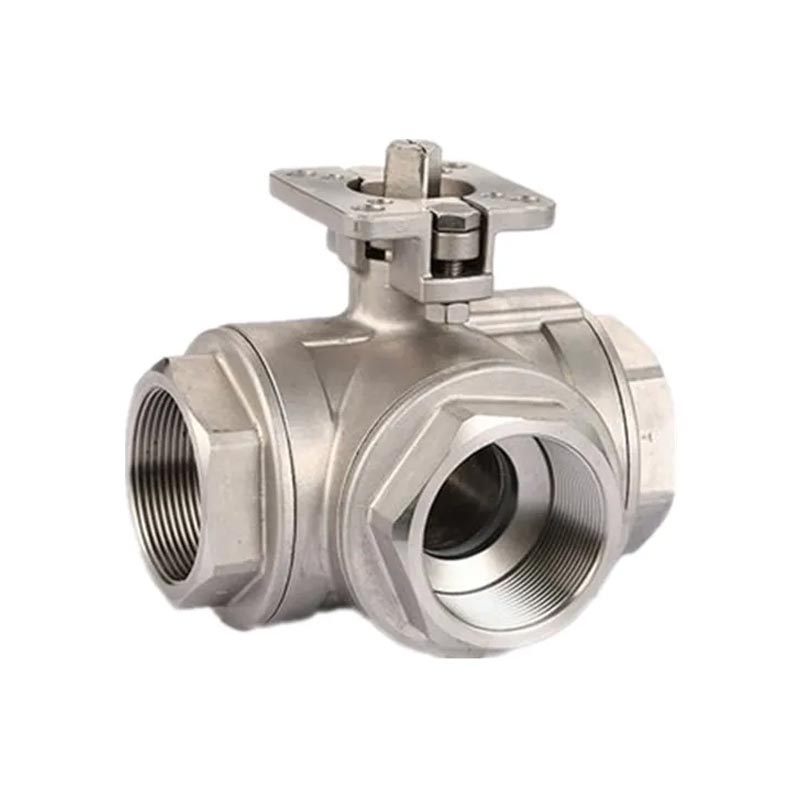Why Are Three Way Ball Valves the Smart Choice for Modern Flow Control Systems?
2025-08-25
In today's industrial world, the demand for reliable and efficient flow control has never been higher. Among the many solutions available, Three Way Ball Valves stand out as one of the most versatile and cost-effective options. These valves are designed to manage fluid direction, mixing, and shutoff within a single unit, making them essential across industries such as chemical processing, oil & gas, water treatment, pharmaceuticals, and HVAC systems.
At Wenzhou Joepai Valve Co., Ltd., we specialize in producing precision-engineered Three Way Ball Valves that combine durability, precision, and adaptability. But why exactly are they considered the "smart choice" for engineers and businesses worldwide? Let's explore their structure, specifications, and applications in detail.
What Is a Three Way Ball Valve and How Does It Work?
A Three Way Ball Valve is a valve type with three ports that allows fluid flow to be directed in multiple configurations. The ball inside the valve has an L-shaped or T-shaped bore, which controls the flow path depending on how it is rotated. This means one valve can perform the work of several, significantly reducing piping complexity and installation costs.
The most common configurations are:
-
L-Port (diverter): Directs flow between two different ports.
-
T-Port (mixer): Allows mixing or splitting of flow between all three ports.
With a simple quarter-turn handle or actuator, users can instantly change flow directions, making them ideal for systems requiring flexibility and fast response.
Key Advantages of Three Way Ball Valves
-
Versatility – One valve can manage multiple functions such as mixing, diverting, or distributing.
-
Compact Design – Reduces the need for multiple valves and complex piping.
-
Durability – Built from stainless steel, carbon steel, or brass for corrosion resistance and long service life.
-
Low Maintenance – Simple construction means fewer potential leak points.
-
Cost-Effective – Lower installation costs compared to installing multiple valves.
Technical Specifications of Our Three Way Ball Valves
To meet different industrial requirements, Wenzhou Joepai Valve Co., Ltd. offers Three Way Ball Valves in a wide range of materials, pressure ratings, and connection types. Below is a summary of the key parameters.
General Parameters
| Specification | Details |
|---|---|
| Size Range | 1/2" to 12" |
| Port Types | L-Port, T-Port |
| Body Material | Stainless Steel (SS304, SS316), Carbon Steel, Brass |
| Seat Material | PTFE, RPTFE, PEEK |
| Connection Options | Flanged, Threaded (NPT, BSP), Welded |
| Pressure Rating | PN16 – PN100 / ANSI 150 – 600LB |
| Temperature Range | -29°C to +200°C (depending on seat material) |
| Operation | Manual handle, Pneumatic actuator, Electric actuator |
| Standards | API 608, ISO 5211, ANSI, DIN, JIS |
Common Applications
Three Way Ball Valves are widely used in industries where flow redirection or mixing is critical. Some common applications include:
-
Chemical Processing – Safe handling of corrosive fluids.
-
Oil & Gas – Diversion of crude oil, gas, and refined products.
-
Water Treatment – Flow control for filtration and distribution systems.
-
HVAC Systems – Efficient regulation of hot and chilled water.
-
Food & Beverage – Hygienic mixing and distribution in stainless-steel designs.
Why Choose Wenzhou Joepai Valve Co., Ltd.?
When investing in industrial valves, reliability and precision are key. Here's why our customers trust us:
-
20+ Years of Experience in valve manufacturing.
-
Strict Quality Control with 100% testing before delivery.
-
Customizable Options for different industries and applications.
-
Competitive Pricing without compromising durability.
-
Global Export Network trusted by clients in Europe, North America, and Asia.
At Wenzhou Joepai Valve Co., Ltd., our mission is simple: to deliver high-quality Three Way Ball Valves that optimize your operations and lower your long-term costs.
FAQ: Three Way Ball Valves
Q1: What is the difference between an L-Port and T-Port Three Way Ball Valve?
A1: An L-Port Three Way Ball Valve is used to divert flow between two outlets while shutting off the third. A T-Port Three Way Ball Valve allows for mixing or splitting flow between all three ports. Choosing between them depends on whether you need distribution (L-Port) or mixing/diversion (T-Port).
Q2: Can Three Way Ball Valves handle high-pressure applications?
A2: Yes. At Wenzhou Joepai Valve Co., Ltd., our Three Way Ball Valves are designed to withstand pressures up to ANSI 600LB (PN100), depending on size and material. They are suitable for industries like oil & gas, where high pressure and safety standards are crucial.
Q3: What are the advantages of using a Three Way Ball Valve over multiple two-way valves?
A3: A single Three Way Ball Valve replaces multiple two-way valves, which reduces installation space, eliminates unnecessary piping, lowers costs, and simplifies system control. This compact design also minimizes leak points, ensuring better system reliability.
Choosing the Right Valve for Your System
When selecting the right Three Way Ball Valves, consider:
-
Material compatibility with your media (chemical, water, gas, etc.).
-
Pressure and temperature requirements of your system.
-
Flow configuration (L-Port or T-Port).
-
Actuation needs (manual, pneumatic, or electric).
Our engineers at Wenzhou Joepai Valve Co., Ltd. are available to assist with technical selection, ensuring you receive a valve that maximizes efficiency and safety.
Final Thoughts
The increasing demand for efficiency and flexibility in modern industries has made Three Way Ball Valves an indispensable solution. With their ability to simplify piping, reduce costs, and improve reliability, these valves are a smart investment for any company dealing with fluid control systems.
At Wenzhou Joepai Valve Co., Ltd., we are committed to providing world-class Three Way Ball Valves tailored to your needs. If you are looking for durable, precise, and cost-effective solutions, contact us today to discuss your project requirements.
📩 Contact Wenzhou Joepai Valve Co., Ltd. for your next order of Three Way Ball Valves and experience the perfect balance of quality and performance.



